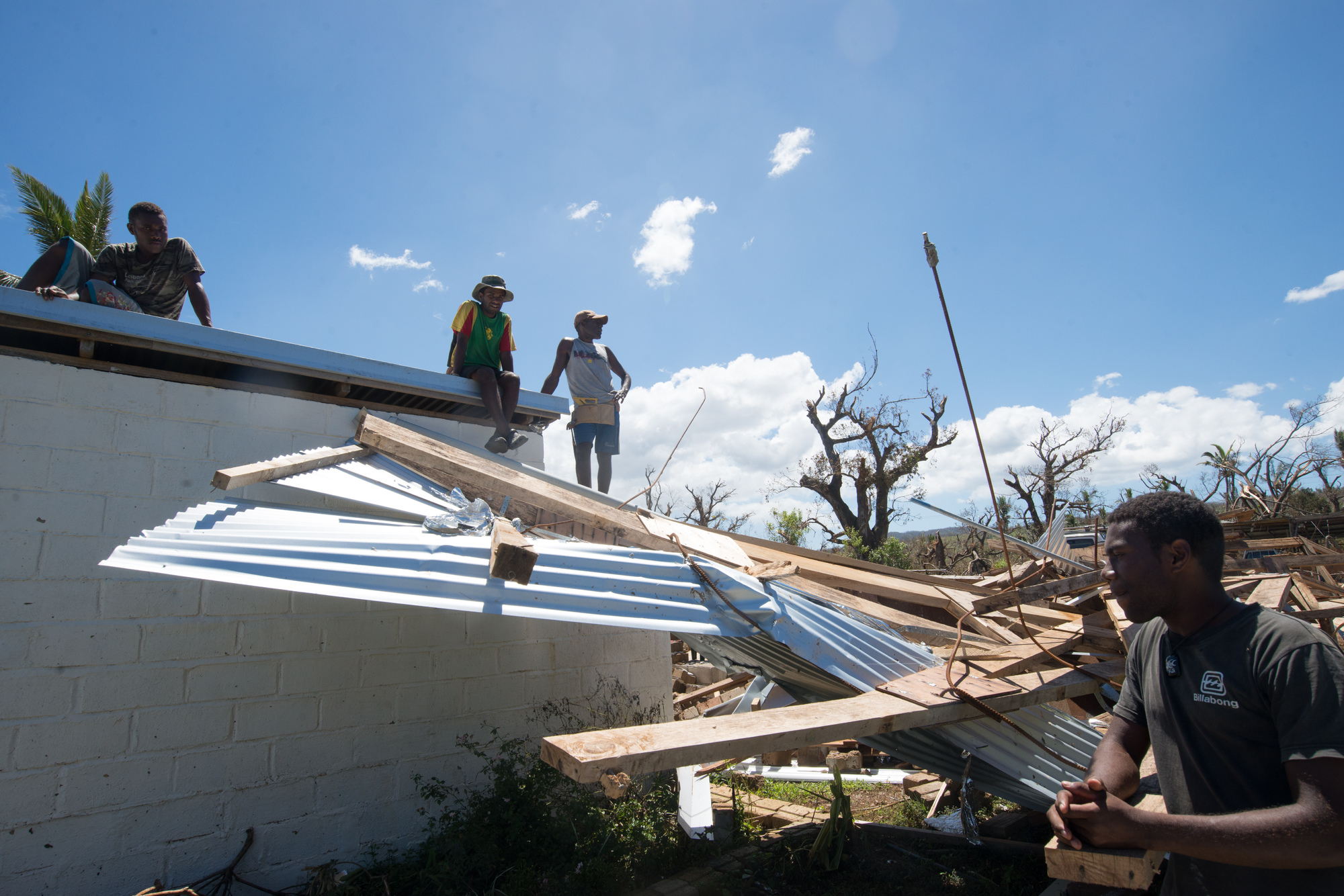[Originally published on the Pacific Policy blog.]
Supercyclone Pam, bringing winds gusting to more than 300 Kph, swept nearly two dozen of Vanuatu’s central and southern islands bare. The destruction is difficult to conceive of, harder still to express. Let one tiny example stand for all: A brand new trade school, constructed to the state of the art, razed after only ten days in operation. Behind it lie the shattered remnants of a giant banyan tree. These trees are integral to Tannese custom; because of their monumental size and durability. Indeed, each of the storied twelve nakamals (sacred gathering places) of Tanna is located under a banyan tree.
Both the ancient and the modern were swept away with equal ease by Pam’s unprecedented power.

To everyone’s surprise, even amazement, only five of the island’s nearly thirty thousand inhabitants perished. The story is the same on all of the worst hit islands: On Efate, with the highest population, just a handful. Two more from tiny Emae, which took a direct hit from the eye of the storm. The list goes on. In all, only eleven people have been confirmed killed, and four of those had been in hospital in serious condition prior to the cyclone.
Nobody can say for certain just yet why the death toll has been so remarkably low. There are likely a number of contributing factors. The first is that the Ni Vanuatu people have had 3000 years to prepare. Historically, Vanuatu has received an average of 1.5 cyclones per year for as long as we’ve been keeping records. Local dwellings are designed with eaves nearly reaching the ground in order to prevent the roof from being blown away. The bamboo walls and natangura-thatched roof are flexible and sufficiently porous to withstand even the strongest winds. Some people hid in purpose-built traditional cyclone shelters. These are tiny, half-subterranean shelters dug into a hillside, walled with tightly woven bamboo. They are cramped, dirty and wet, but they go a long way to ensuring survival.
Had this been a ‘normal’ cyclone, it’s doubtful whether it would have made the news at all. Read more “Surviving Cyclone Pam”

